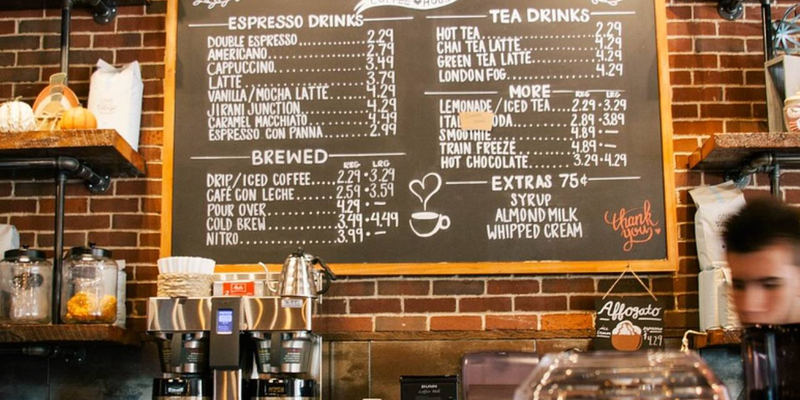The menu is the backbone of the restaurant business.
This is not just a list of dishes served in the establishment, but a way to offer the visitor what he is most interested in, to capture his attention. A common mistake novice restaurateurs make is to take on the layout of the menu at the last stage of opening a cafe. It is better to fully plan the menu of your establishment at the stage of drawing up a business plan for a cafe or restaurant. When the interior, signboard and logo are ready, it can be difficult to bring the menu to the already created atmosphere of the establishment. It is logical to start with the menu, and you need to do this before you shape the atmosphere of your restaurant or cafe. The image of the establishment is expressed in the choice of cuisine and key dishes, and then comes the time for interior and style. Even the staff uniform depends on the menu! Imagine waiters in kimonos with a menu that only has pizza and craft beer to choose from.

A good menu should also be convenient for your waiters, so they can quickly find the right item and forward the order to the kitchen.
Do not neglect the simplest advice: look at how the menus of your competitors are designed. Does it fit with the overall concept of the establishment and what do customers order more often? Don’t be afraid to borrow successful models and add them to your menu. But brazenly copying, of course, is not worth it. It is possible to correctly compose a menu for a cafe or restaurant only after analyzing the market.Free mini book:
13 tips for those who are planning to open a cafe
Thank you! The PDF download will start automatically in 5 seconds. Click if the download has not started.
Creating a menu for a cafe or restaurant can be divided into several stages. First, a concept is formed: groups of drinks and dishes, positions for each group and price categories.
Then a test tasting, after which the key dishes on the menu are selected. The final stage is the creation of technological maps and the choice of the optimal serving of the dish to the visitor. We advise you to invite an experienced chef to draw up technical charts, which your chefs will later use.
What should be considered when developing a menu?
- target audience;
- choice of cuisine;
- institution format;
- the level of trade margin and the optimal cost of each dish;
- culinary trends.
Remember, a long menu increases the service time for visitors. Instead of deciding on an order within a few minutes, they will study the menu for a long time and scrupulously. This is especially true for customers who come to you for the first time. They also cannot decide what they should try, and consult with the waiter. The speed of serving other tables is significantly reduced, which means you are losing money.
Some restaurateurs argue in favor of a long menu that the client, having tried everything, will stop going to your establishment. This is an erroneous opinion. Remember: your regular customers come back to eat their favorite dish again and recommend it to their friends. Don’t confuse the booklet menu with the specials of the week or the month, which are often used as a serving mat or as a pyramid on the table. This is a great way to highlight your margin positions and seasonal specialties, which we’ll cover in a bit.
But you notice that some dishes sell very poorly, although they have a minimal margin. It is important not only to work out the menu, but also to make it selling. It all starts with an analysis of the existing assortment and identification of the most marginal and popular positions. Perhaps we will reveal the secret of the restaurant business to someone, but almost all restaurant owners have been using the simplest and best method for over 30 years.

The classic menu engineering technique was developed back in the early 1980s by University of Michigan scientists Donald Smith and Michael Kasanava from the United States. They took a popular market position analysis model and adapted it to the restaurant business to understand how different menu items work. Then we divided all the dishes from the menu according to two criteria: the share of sales in the category (compared to the average) and the margin per unit of goods (compared to the average).
We add up the known data and enter the total sales, total gross cost and gross margin.
If you want to calculate
food cost, then divide the gross cost by the total category sales and multiply by 100%: 14,620.5 / 58,400 * 100 = 25%.
To find out the average margin of a dish, divide the gross margin by the total number of items sold: 43779.5 / 200 = 218.9. By comparing the data for each position with this figure, you will understand which dishes you have are high-margin and which are not.
To find the share of sales for each dish, divide the number of servings sold by the total number of dishes sold and multiply by 100. If you want to find the average share of sales for a dish in this category, then divide 100% by the number of items in the beer snack category: 100 / 4 = 25%. By comparing the share of sales of each dish with the average share of sales, you will determine the most and least popular dishes.

